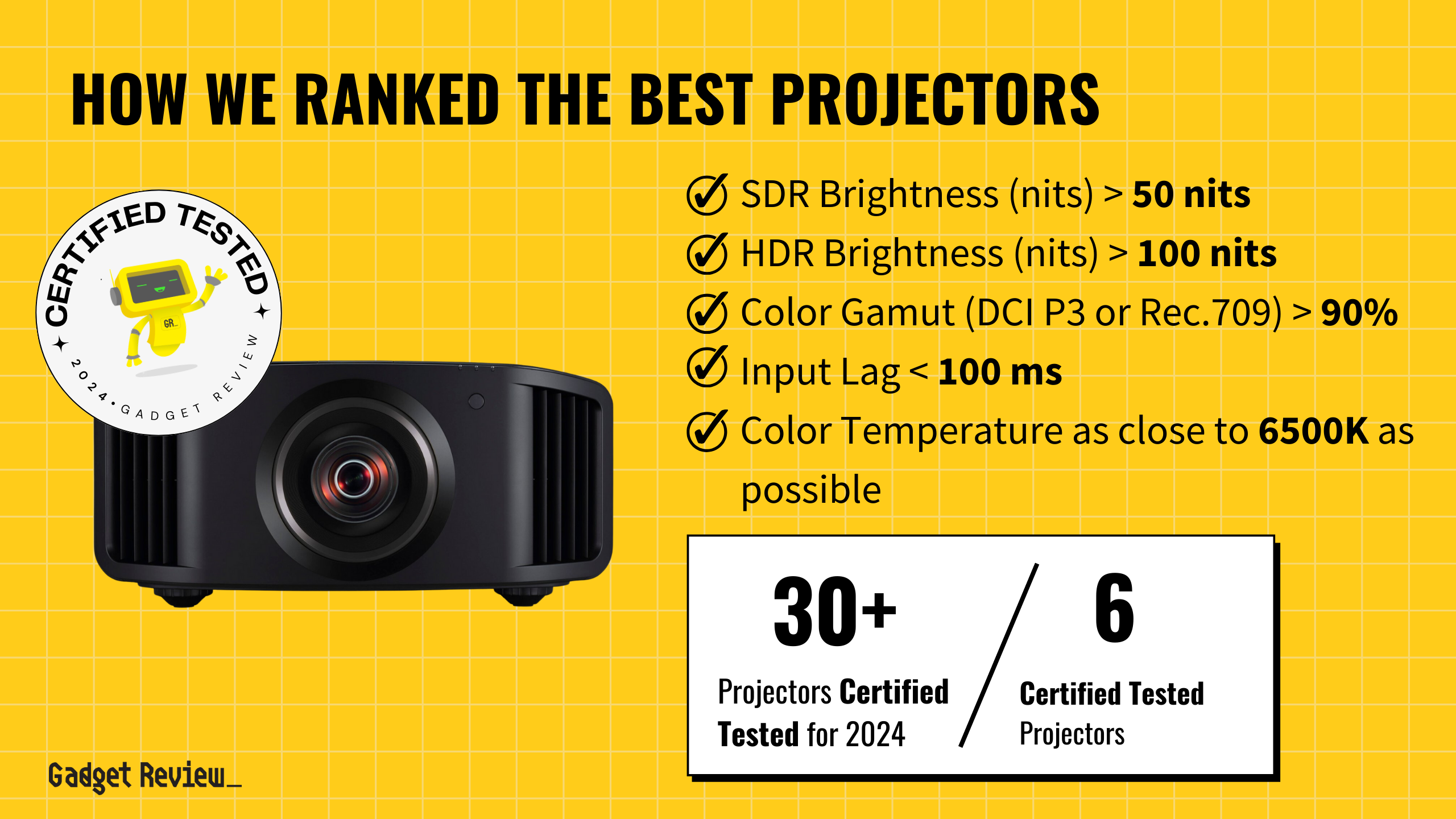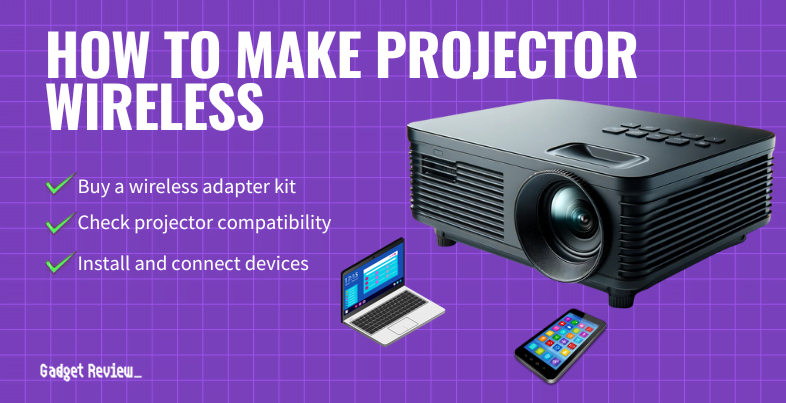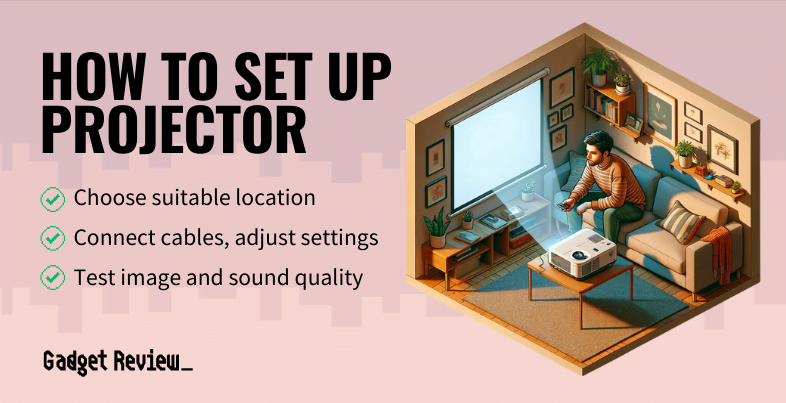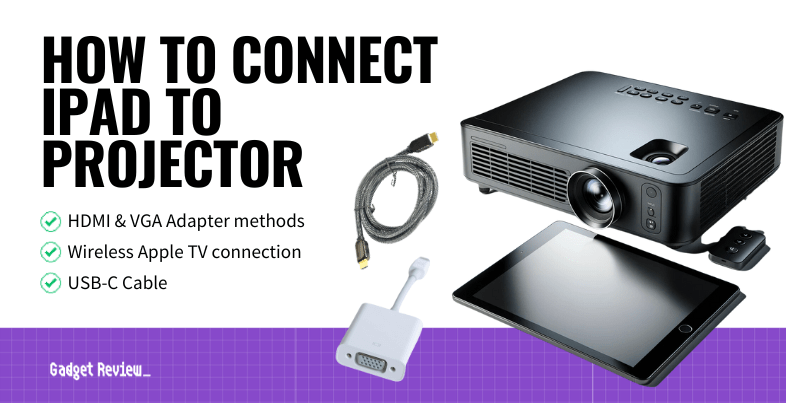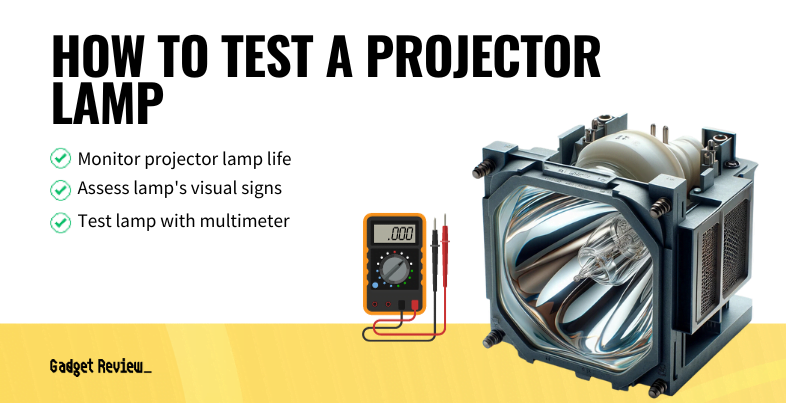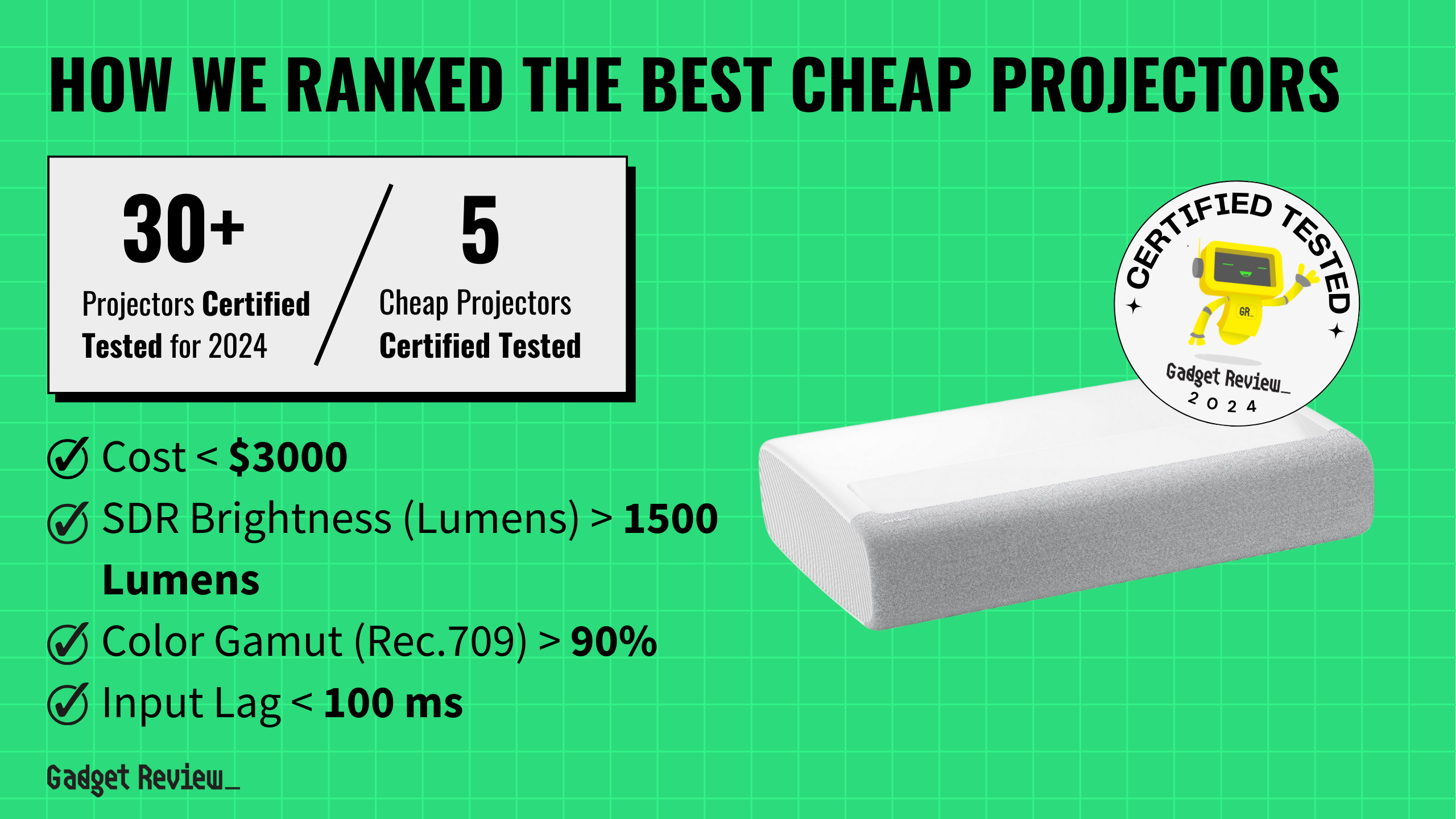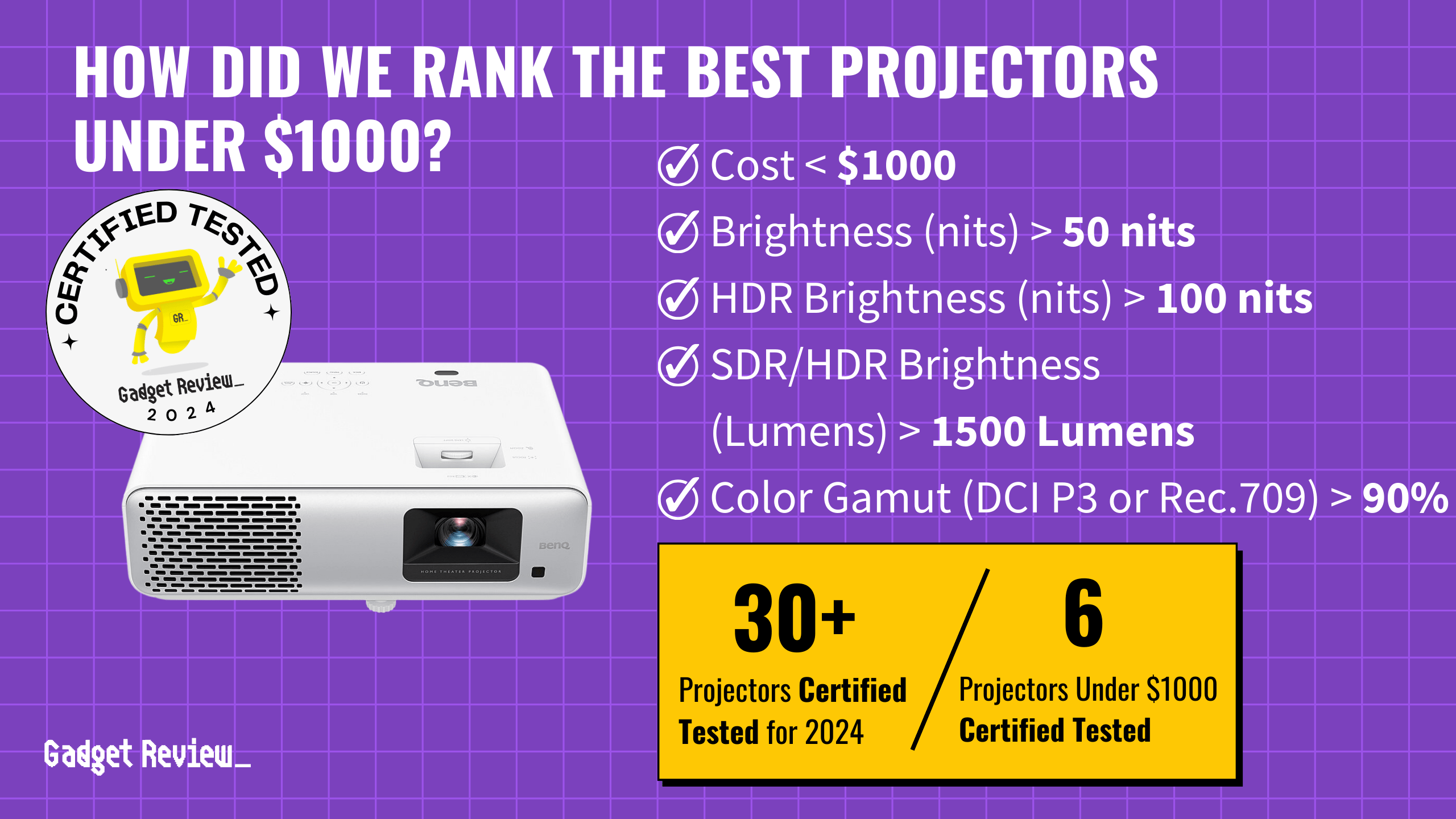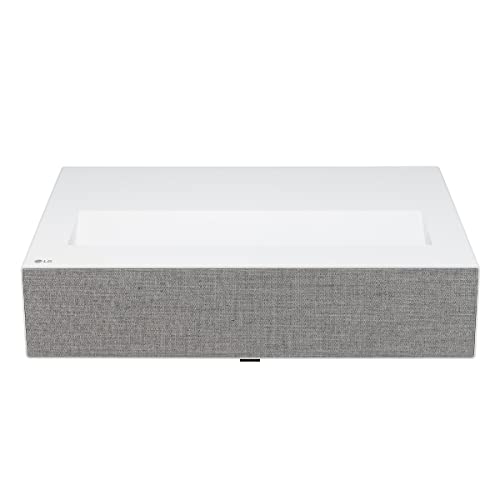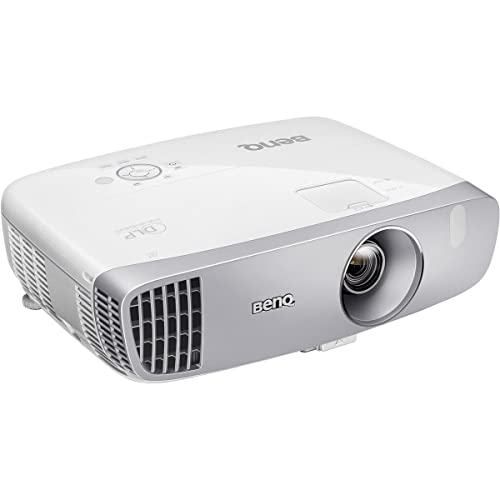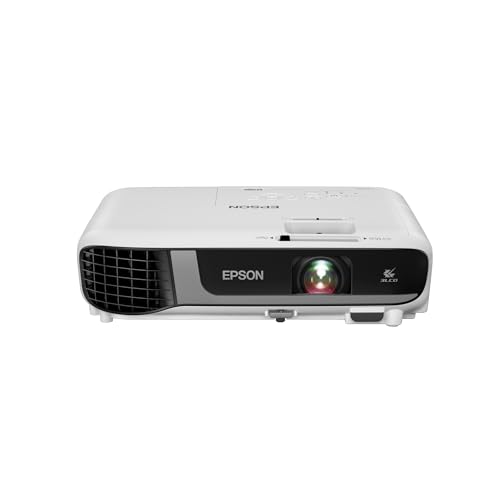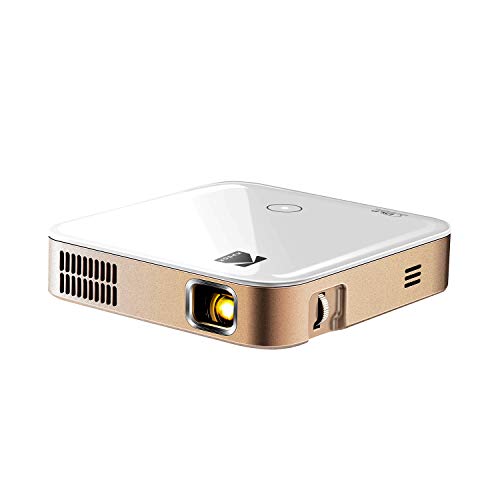When selecting the best projectors, it’s crucial to consider key features such as brightness, image quality, and input lag. High brightness ensures visibility in various lighting conditions, while superior image quality, including accurate color reproduction, enhances the viewing experience. Low input lag is essential for smooth gameplay or fast-paced presentations. These attributes are vital whether you’re watching movies, sports, gaming, or delivering presentations.
In our latest buying guide, we highlight six top-performing projectors from an analysis of 30 models. These were selected after sifting through 10,295 reviews, filtering out 84% of experts due to untrustworthy reviews. Our evaluation relied on verifying product testing and utilizing our Trust Score system to ensure the reliability of the reviews. The winning projectors excelled in all critical performance areas, offering a dependable and immersive viewing experience.
How Did We Rank the Best Projectors?
The most important projector criteria vary depending on what you’re using a projector for. While not every projector on this list can do everything you use a projector for perfectly, they can all do a good enough job – and really shine in a few unique use cases each.
| CRITERIA | RANGE | REQUIRED | DEFINITION |
|---|---|---|---|
| SDR Brightness (lumens) | > 1000 lumens | No (Nice to have) | The amount of light the projector outputs from the lamp/bulb and projects onto the screen when playing SDR content. |
| HDR Brightness (lumens) | > 2000 lumens | No (Nice to have) | The amount of light the projector outputs from the lamp/bulb and projects onto the screen when playing HDR content. |
| Contrast Ratio | > 2000:1 | No (Nice to have) | The % of colors a projector can produce is defined by the gamut. DCI-P3 is commonly used in film. |
| Color Gamut % (DCI P3) | > 90% | No (Nice to have) | The % of colors a projector can produce is defined by the gamut. Rec. 709 is commonly used by HD TV, and is also known as BT.709. |
| Color Gamut % (Rec. 709) | > 90% | No (Nice to have) | The % of colors a projector can produce is defined by the gamut. Rec.2020 is commonly used by UHD TV content, as well as HDR content. It is also known as BT.2020. |
| Input Lag | < 40 ms | No (Nice to have) | The amount of time it takes for inputs to be registered and processed by the projector and shown on screen. |
When you shop through our links, you’re backing our mission. Dive deeper to see how.
Latest Updates
- 08/09/2024: Republished the list to include the best projectors based on our True Score system.
Top Projectors For 2025
Prices accurate at the time of publishing

Best Overall

Runner Up

Best Value

Best Budget

Best Mid-Range

Premium Pick
JVC DLA-NZ8
The JVC DLA-NZ8 is an exceptional high-end 4K projector for home theaters, churches, and educational settings, offering impressive brightness and superior color accuracy.
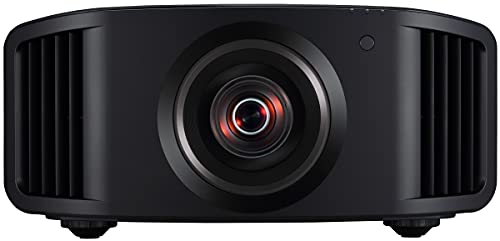
True Score
95964Experts
994Customers
Cosmic Wonder
 $9,799.99
$9,799.99Read More
Snapshot
Reasons to Buy
- Good brightness rating
- Sharp image quality
- Low 38ms input lag
Reasons to Avoid
- Bulky in size
Specifications

Resolution 4096 x 2160 Refresh Rate 240 Hz 
Display Technology D-ILA 
Contrast Ratio 80,000:1 
Digital Keystone Yes 
HDR HDR10, HDR10+, Hybrid Log-Gamma (HLG) 
Max Distance n/a 
Max Screen Size 200″ 
3D Ready Yes 
Aspect Ratio 17:9 
Brightness 2500 lumens 
Depth 20″ 
Height 9.2″ 
Integrated Speakers No 
Light Source Laser 
Light Source Life 20000 hrs 
Min Distance 85.80″ 
Min Screen Size 60″ 
Noise Level 24 dB 
Portable No 
Smart Functionality Remote 
Sync Technology n/a 
TV Tuner No 
ThrowType 1.43:1 – 2.8:1 
Video Inputs HDMI 2.0 
Weight 49.5″ 
Width 19.6″ Yes – All Specs
Test Results
SDR Brightness (Lumens) 1,999 HDR Brightness (Lumens) 1,973 Contrast Ratio (x:y) 0 Input Lag (ms) 39 Color Gamut % (Rec. 709) 138 Color Gamut % (DCI P3 uv) 95 SDR Brightness (nits) 0 HDR Brightness (nits) 0 SDR Color Temperature (K) 0 HDR Color Temperature (K) 0 Color Gamut % (Rec. 2020) 0 Color Gamut % (BT.2020) 0 Color Gamut % (BT. 709) 0 All Tests
All Retailers
- $9,799.99
- $16,000.00
Our Verdict
The JVC DLA-NZ8 is an exceptional choice for those seeking a high-end 4K projector, particularly in home theaters, churches, or educational settings. With impressive brightness levels of 1999 lumens for SDR and 1973 lumens for HDR, it ensures vivid and detailed images even in ambient light. This feature is crucial for an immersive cinematic experience at home or in large, well-lit venues.
One of the standout features of the JVC DLA-NZ8 is its superior color accuracy, boasting a 137.6% coverage of the Rec. 709 color space and 95.11% DCI P3 color coverage. This level of precision makes it ideal for film enthusiasts, professionals in the visual arts, and church coordinators who require true-to-life colors. The projector’s ability to display rich reds and deep greens enhances the overall viewing experience, making it a versatile choice for various applications, from movie watching to educational presentations.
While the JVC DLA-NZ8’s input lag of 38.5 ms may not be ideal for competitive gaming, it is still responsive enough for casual gaming. This versatility, combined with its exceptional brightness and color accuracy, makes the projector an excellent investment for those who prioritize quality in their viewing experiences. Whether you’re an educator, home theater enthusiast, or church coordinator, the JVC DLA-NZ8 delivers outstanding visual quality and performance, justifying its higher price point.
Read Less

Best Overall

Runner Up

Best Value

Best Budget

Best Mid-Range

Premium Pick
JVC DLA-NP5
Best For 4K
The JVC DLA-NP5 is an exceptional 4K projector for gamers, boasting a low 19.5 ms input lag and a versatile 17:9 aspect ratio for immersive experiences.
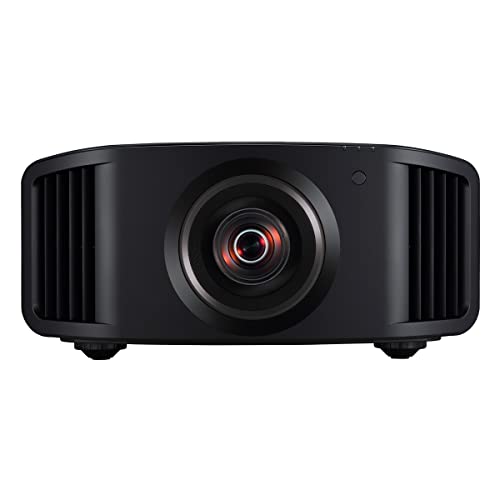
True Score
94942Experts
9715Customers
Cosmic Wonder
 SAVE $2$5,999.95$3,599.99
SAVE $2$5,999.95$3,599.99Read More
Snapshot
Reasons to Buy
- Good brightness rating
- High image quality
- Low input lag
Reasons to Avoid
- Large in size
Specifications

Resolution 4096 x 2160 Refresh Rate 240 Hz 
Display Technology D-ILA 
Contrast Ratio 400,000:1 
Digital Keystone Yes 
HDR HDR10, HDR10+, Hybrid Log-Gamma (HLG) 
Max Distance 510″ 
Max Screen Size 200″ 
3D Ready Yes 
Aspect Ratio 17:9 
Brightness 1900 Lumens 
Depth 19.5″ 
Height 9.2″ 
Integrated Speakers No 
Light Source Lamp 
Light Source Life 3,500 hrs 
Min Distance 74.4″ 
Min Screen Size 60″ 
Noise Level 24 dB 
Portable No 
Smart Functionality No 
Sync Technology n/a 
TV Tuner No 
ThrowType 1.40:1 – 2.80:1 
Weight 42.3 lbs 
Width 19.6″ Yes – All Specs
Test Results
SDR Brightness (Lumens) 1,465 HDR Brightness (Lumens) 1,460 Contrast Ratio (x:y) 0 Input Lag (ms) 20 Color Gamut % (Rec. 709) 132 Color Gamut % (DCI P3 uv) 89 SDR Brightness (nits) 0 HDR Brightness (nits) 0 SDR Color Temperature (K) 0 HDR Color Temperature (K) 0 Color Gamut % (Rec. 2020) 0 Color Gamut % (BT.2020) 60 Color Gamut % (BT. 709) 0 All Tests
All Retailers
- $3,599.99$6,000Save $2
- $4,599.99
Our Verdict
The JVC DLA-NP5 stands out as an exceptional 4K projector, particularly for gaming enthusiasts who prioritize responsiveness. With an impressive input lag of just 19.5 milliseconds, this projector ensures a lag-free, immersive gaming experience where every millisecond counts. Its 17:9 aspect ratio and 4096×2160 resolution provide a slightly wider view than standard 16:9 projectors, further enhancing the gaming experience by allowing for a more immersive field of view.
Not only is the DLA-NP5 an excellent choice for gamers, but its versatility also extends to other multimedia applications. It boasts a refresh rate of 240 Hz, which reduces visual tearing in high-frame-rate games, and covers 88.5% of the DCI P3 color space, offering vibrant colors that are ideal for both movies and games. Additionally, the projector supports 3D content and features Frame Adapt HDR, enhancing the depth and dynamic range of darker scenes, making it a well-rounded choice for a home theater setup.
In summary, the JVC DLA-NP5 is a top-tier 4K projector that excels in gaming due to its low input lag and broad aspect ratio. Its versatility in delivering high-quality visuals across different types of content, along with features like Frame Adapt HDR and a 200” maximum screen size, make it an invaluable addition to any entertainment setup, albeit with a premium price tag.
Read Less

Best Overall

Runner Up

Best Value

Best Budget

Best Mid-Range

Premium Pick
Epson Home Cinema 3800
Best For Bright Room
The Epson Home Cinema 3800 is a budget-friendly projector with minimal input lag and high brightness, ideal for fast-paced gaming and versatile enough for various uses.
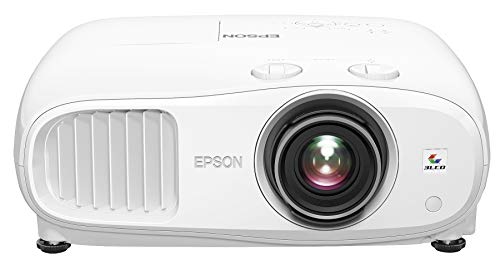
True Score
83846Experts
871kCustomers
Absolutely Fresh
 $1,662.59
$1,662.59Read More
Snapshot
Reasons to Buy
- Great brightness
- Great image quality
- 4K resolution
Reasons to Avoid
- Lacks a wide color gamut
- The lamp output may not match the specs
- Mediocre 28-ms input lag
Specifications

Resolution 1920 x 1080 (Full HD) Refresh Rate 60 Hz 
Display Technology 3LCD, LCD 
Contrast Ratio 100,000:1, 200,000:1 
Digital Keystone ± 30° (manual) 
HDR No, Yes 
Max Distance 300″ 
Max Screen Size 300″ 
3D Ready No, Yes 
Aspect Ratio – 
Brightness 3000 lumens 
Depth 13″ 
Height 6.5″ 
Integrated Speakers No, Yes 
Light Source UHP lamps 
Light Source Life 3,500 hrs 
Min Distance 0″ 
Min Screen Size 40″ No – 
Noise Level 35 dB 
Portable No, Yes 
Smart Functionality Automatic Adjustments, Bluetooth, Eco-Friendly, Energy-Saving, Remote, USB 
Sync Technology VRR 
TV Tuner No, Yes 
ThrowType 1.32 to 2.15:1. 
Video Inputs HDMI 2.0, USB, VGA 
Weight 15.2 lbs 
Width 16.1″ All Specs
Test Results
SDR Brightness (Lumens) 2,176 HDR Brightness (Lumens) 0 Contrast Ratio (x:y) 24k Input Lag (ms) 28 Color Gamut % (Rec. 709) 114 Color Gamut % (DCI P3 uv) 77 SDR Brightness (nits) 275 HDR Brightness (nits) 235 SDR Color Temperature (K) 0 HDR Color Temperature (K) 0 Color Gamut % (Rec. 2020) 0 Color Gamut % (BT.2020) 0 Color Gamut % (BT. 709) 0 All Tests
All Retailers
- $1,662.59
- $1,699.99
- $1,699.99
- $1,699.99
Our Verdict
The Epson Home Cinema 3800 stands out as an excellent choice for anyone seeking a budget-friendly projector with impressive performance. Its standout feature is the 28 ms input lag, which makes it an ideal option for fast-paced gaming where every millisecond counts. Coupled with a brightness of 2176 lumens in Standard Dynamic Range (SDR), it ensures bright and vivid visuals, perfect for daylight viewing and well-lit indoor environments. This projector’s versatility extends beyond gaming; it’s equally adept at handling streaming and office presentations, making it a practical choice for various uses.
One of the key strengths of the Epson Home Cinema 3800 is its impressive contrast ratio of 23,971:1 and 113.7% coverage of the Rec. 709 color gamut. These features deliver true-to-life colors and deep blacks, enhancing the overall viewing experience. While it may not match the color accuracy of more specialized projectors like the Samsung Premiere LSP9T, it still offers excellent visual clarity and color accuracy, making it a solid choice for home entertainment and professional settings alike.
Additionally, the projector’s robust feature set, including digital keystone correction, allows for flexible placement and minimal image distortion. This makes it a reliable and adaptable option for various environments, from bright living rooms to large educational spaces. The combination of affordability, high-quality picture, and versatile functionality makes the Epson Home Cinema 3800 a valuable addition to any setup, offering a blend of price and performance that is hard to beat. Whether you’re a gamer, educator, or just looking for a quality projector for everyday use, this model provides excellent value and versatility.
Read Less

Best Overall

Runner Up

Best Value

Best Budget

Best Mid-Range

Premium Pick
BenQ TK700STI
The BenQ TK700STI is a versatile 4K projector with high brightness and smart features, perfect for educators and tech enthusiasts needing clear, detailed visuals in well-lit environments.
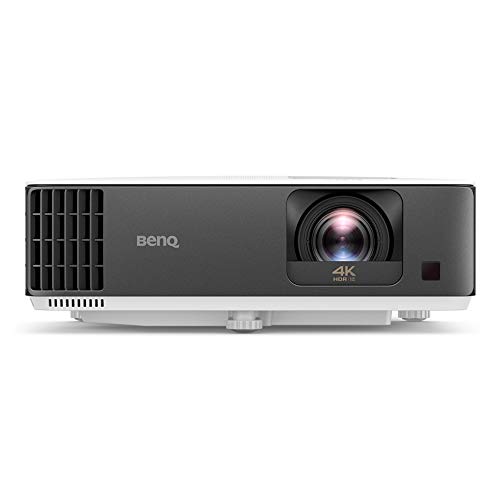
True Score
76776Experts
79261Customers
Mixed Reviews
 SAVE $605$1,699.00$1,094.00
SAVE $605$1,699.00$1,094.00Read More
Snapshot
Reasons to Buy
- Good brightness
- Low input lag
- Great connectivity
- Convenient throw ratio for gaming
Reasons to Avoid
- Subpar image quality
- Mediocre built-in audio quality
Specifications

Resolution 3840 x 2160 (4k) Refresh Rate 60 Hz 
Display Technology DLP 
Contrast Ratio 10,000:1 
Digital Keystone Yes 
HDR Yes 
Max Distance 168″ 
Max Screen Size 200″ 
3D Ready Yes 
Aspect Ratio 16:9 
Brightness 3000 lumens 
Depth 9.70″ 
Height 4.3″ 
Integrated Speakers Yes 
Light Source Laser 
Light Source Life 10000 hrs 
Min Distance 51″ 
Min Screen Size 60″ 
Noise Level 35 dB 
Portable Yes 
Smart Functionality Android TV, Bluetooth, Remote, USB 
Sync Technology – 
TV Tuner No 
ThrowType Short Throw 
Video Inputs HDMI 2.0, RS232, USB 
Weight 6.8 lbs 
Width 12″ Yes – All Specs
Test Results
SDR Brightness (Lumens) 0 HDR Brightness (Lumens) 0 Contrast Ratio (x:y) 1,011 Input Lag (ms) 20 Color Gamut % (Rec. 709) 0 Color Gamut % (DCI P3 uv) 0 SDR Brightness (nits) 276 HDR Brightness (nits) 299 SDR Color Temperature (K) 0 HDR Color Temperature (K) 0 Color Gamut % (Rec. 2020) 0 Color Gamut % (BT.2020) 0 Color Gamut % (BT. 709) 0 All Tests
All Retailers
- $1,094.00$1,699Save $605
- $1,399.00$1,699Save $300
- $1,399.00$1,599Save $200
Our Verdict
The BenQ TK700STI is a standout choice for educators and tech enthusiasts seeking a versatile projector that excels in various settings. With its 4K resolution, the projector delivers stunning detail, making it ideal for displaying intricate graphs and immersive video content in bright classrooms. The impressive 3,000 lumens of brightness ensure clear and vivid images even in well-lit environments, while the 10,000:1 contrast ratio provides deep blacks and bright whites for a dynamic viewing experience.
For those who value connectivity and ease of use, the BenQ TK700STI offers smart functionalities like Android TV and Bluetooth, coupled with a short throw ratio that allows for flexible placement. This makes it easy to set up engaging, interactive learning or presentation spaces without hassle.
Compared to other projectors like the BenQ HT2060, the TK700STI’s 4K resolution and higher brightness levels make it a superior choice for well-lit rooms. While it may not offer the highest contrast or the largest screen size, its ability to maintain sharp visuals under ambient light conditions makes it a versatile and practical option for various applications, from classroom learning to golf simulations.
Despite its higher price point, the BenQ TK700STI’s blend of crisp visuals, smart features, and adaptability make it a worthy investment for those looking to enhance their experience with high-definition content. Whether for educational purposes or immersive entertainment, this projector offers exceptional quality and value.
Read Less

Best Overall

Runner Up

Best Value

Best Budget

Best Mid-Range

Premium Pick
Optoma CinemaX P2
Best For Short Throw
The Optoma CinemaX P2 offers budget-conscious home cinema enthusiasts quality visuals with impressive brightness and color accuracy, making it ideal for immersive movie experiences.
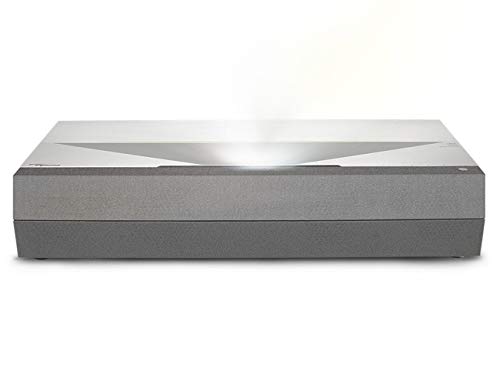
True Score
75770Experts
78405Customers
Mixed Reviews
 SAVE $200$1,999.00$1,799.00
SAVE $200$1,999.00$1,799.00Read More
Snapshot
Reasons to Buy
- Impressive brightness output
- High image quality
Reasons to Avoid
- High input lag
- Prone to rainbow artifacts
Specifications

Resolution 3840 x 2160 (4k) Refresh Rate 60 Hz 
Display Technology DLP 
Contrast Ratio 2,000,000:1 
Digital Keystone Yes 
HDR Yes 
Max Distance 17″ 
Max Screen Size 120″ 
3D Ready Yes 
Aspect Ratio 16:9 
Brightness 3000 lumens 
Depth 14.96″ 
HDMI Type 2.0 
Height 5.11″ 
Integrated Speakers Yes 
Light Source Laser 
Light Source Life 30,000 hrs 
Min Distance 6″ 
Min Screen Size 85″ 
Noise Level 26 dB 
Portable No 
Smart Functionality Amazon Alexa, Android TV, Google Assistant 
Sync Technology n/a 
TV Tuner No 
ThrowType Ultra Short Throw Technology 
Video Inputs Ethernet, HDMI 2.0, USB 
Weight 24.25 lbs 
Width 22″ All Specs
Test Results
SDR Brightness (Lumens) 2,488 HDR Brightness (Lumens) 1,990 Input Lag (ms) 70 Color Gamut % (Rec. 709) 117 Color Gamut % (DCI P3) 79 All Retailers
- $1,799.00$1,999Save $200
- $1,999.99
- $1,999.00
Our Verdict
The Optoma CinemaX P2 is an excellent choice for budget-conscious home cinema enthusiasts seeking quality visuals without breaking the bank. With SDR and HDR brightness levels at 2488 and 1990 lumens, respectively, this projector ensures clear and vivid visuals, even in well-lit rooms. Its impressive 117% Rec. 709 color gamut coverage delivers rich and vibrant colors, making it perfect for immersive viewing experiences, particularly in dimly lit environments.
While its input lag of 69.8 ms might not satisfy hardcore gamers, it remains perfectly acceptable for casual gaming and standard video content. The slight delay is a reasonable trade-off for the cinematic quality the P2 offers, making it more suited for movie nights than competitive gaming sessions. However, for those prioritizing gaming performance, alternatives like the Epson Home Cinema 3800 or the Formovie Theater, with lower input lags, may be more appealing.
Versatile and capable, the Optoma CinemaX P2 excels in various applications, from streaming to office presentations, particularly in controlled lighting conditions. Its balanced performance and cost-effective pricing make it a valuable addition to any home entertainment setup. The CinemaX P2 offers substantial value as a versatile and economically priced projector, ensuring an enjoyable viewing experience across different content and settings.
Read Less

Best Overall

Runner Up

Best Value

Best Budget

Best Mid-Range

Premium Pick
Anker Capsule 3
The Anker Capsule 3 impresses with its compact design, Full HD resolution, and smart features, making it a versatile and portable projector for movie enthusiasts, gamers, and professionals.
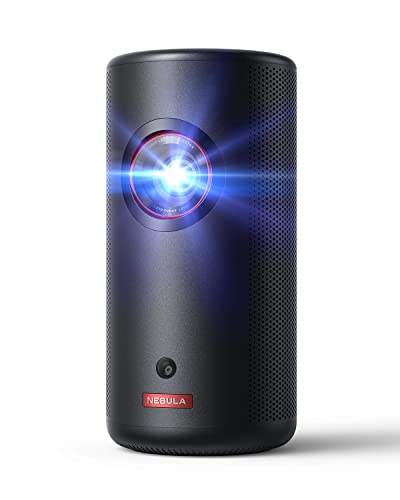
True Score
73748Experts
76439Customers
Mixed Reviews
 SAVE $200$749.99$549.99
SAVE $200$749.99$549.99Read More
Snapshot
Reasons to Buy
- Good image quality for size
- Reasonably low input lag
Reasons to Avoid
- Poor brightness levels
- No Netflix app
Specifications

Resolution 1920 x 1080 (Full HD) Refresh Rate 60 Hz 
Display Technology DLP 
Contrast Ratio 500:1 
Digital Keystone Yes 
HDR Yes 
Max Distance n/a 
Max Screen Size 120″ 
3D Ready No 
Aspect Ratio 16:9 
Brightness 300 ANSI Lumens 
Depth 6.5″ 
HDMI Type HDMI 2.1 
Height 6.7″ 
Integrated Speakers Yes 
Light Source Laser 
Light Source Life 30,000 hrs 
Min Distance n/a 
Min Screen Size 60″ 
Noise Level 32 dB 
Portable Yes 
Smart Functionality Android TV, Bluetooth, Google Assistant, Google Cast, Remote, Wi-Fi 
Sync Technology n/a 
TV Tuner No 
ThrowType Short Throw 
Video Inputs HDMI, USB 
Weight 2.1 lbs 
Width 3.2″ All Specs
Test Results
SDR Brightness (Lumens) 175 Contrast Ratio (x:y) 138 Input Lag (ms) 22 Color Gamut % (Rec. 709) 92 Color Gamut % (DCI P3 uv) 75 Color Gamut % (Rec. 2020) 56 SDR Color Temperature (K) 6,863 All Tests
All Retailers
- $549.99$750Save $200
- $799.99
Our Verdict
The Anker Capsule 3 impresses with its compact, portable design and advanced DLP laser technology, offering a versatile solution for movie enthusiasts, gamers, and professionals alike. Its Full HD resolution ensures crisp visuals, while the laser light source promises a long lifespan of up to 30,000 hours, making it a reliable choice for extended use.
Despite its modest 300 ANSI lumens brightness and 500:1 contrast ratio, the Capsule 3 excels in delivering vibrant colors, ideal for dimly lit environments such as home theaters or evening outdoor events. Its integration with Android TV, Google Assistant, and Google Cast enhances its functionality, allowing easy access to streaming services and voice control. This smart feature set, combined with multiple connectivity options, including HDMI and USB ports, makes it an all-in-one media hub suitable for various settings.
Weighing just 2.1 lbs, the Anker Capsule 3 is extremely portable, making it perfect for on-the-go entertainment or business presentations. Its short throw capability allows for large screen sizes even in small spaces, catering to users with limited room. While its price point may be higher, the Capsule 3’s combination of portability, smart features, and quality projection makes it a standout option for those seeking a high-functionality, easy-to-use projector.
Read Less

Our Approach to Evaluating Projectors
We’ve redefined projector buying guides, setting us apart from any other site on the planet. Our unique approach uses a comprehensive dataset from trusted sites, focusing on key testing metrics like brightness, input lag, contrast ratio, and color gamut.
We aggregate and analyze this data, ensuring our recommendations meet the specific needs. Specifically, when it comes to projectors, this involves selecting models that deliver good brightness, vivid colors, and good contrast ratios. Discover our data-driven methodology for precise, reliable projector recommendations.
Which Criteria Matters for Testing Projectors?
By focusing on these criteria, anyone can quickly and easily compare these projectors and how they’ll perform. This helps you make an informed decision and purchase a projector that will accomplish everything you need to use it for.
| CRITERIA | RANGE | REQUIRED | DEFINITION |
|---|---|---|---|
| SDR Brightness (lumens) | > 1000 lumens | No (Nice to have) | The amount of light the projector outputs from the lamp/bulb and projects onto the screen when playing SDR content. |
| HDR Brightness (lumens) | > 2000 lumens | No (Nice to have) | The amount of light the projector outputs from the lamp/bulb and projects onto the screen when playing HDR content. |
| Contrast Ratio | > 2000:1 | No (Nice to have) | The difference between the brightest white and darkest black that a projector can produce, expressed as a ratio. |
| Color Gamut % (DCI P3) | > 90% | No (Nice to have) | The % of colors a projector can produce defined by the gamut. DCI-P3 is commonly used in film. |
| Color Gamut % (Rec. 709) | > 90% | No (Nice to have) | The % of colors a projector can produce defined by the gamut. Rec. 709 is commonly used by HD TV, and is also known as BT.709. |
| Input Lag | < 40 ms | No (Nice to have) | The amount of time it takes for inputs to be registered and processed by the projector and shown on screen. |
Our Trusted Data Sources
We looked at 90+ projector reviewers and found that 15 are trustworthy (60%+ Trust Rating). The three we have listed below are our most trusted for projector.
- Pierre-Olivier Jourdenais – Rtings, LinkedIn
- Chris Eberle – Home Theater HiFi
- Hayley Thomas – Techgear Lab
Interested in a comprehensive analysis of our data sources? We’ve got you covered. Below, you’ll find a detailed list of every projector review website we’ve identified, organized by their respective Trust Ratings from highest to lowest. But we didn’t stop there. We’ve meticulously reviewed each publication and verified the data by checking whether the authors have bio links to MuckRack or LinkedIn. We’re committed to not only checking the facts but ensuring their veracity.
Projector Specifications, Test Data & Results
Disclaimer:
Projectors are complex and difficult to test and evaluate, requiring extensive testing on the same level as televisions to paint a complete picture of how any given unit performs. Unfortunately, the testing behind projectors isn’t as rigorous, and a lot of the data we’ve compiled from expert reviewers has been incomplete at times. With different brightnesses measured from different sources, different color gamut tested, and spotty contrast ratio measurements, we’ve done the best we can to leverage the available data when putting together these lists but have also trusted our True Score to help us make decisions when the data isn’t available.
1. SDR Brightness (lumens) Test Results
Projectors have two ways you can realistically measure brightness: in lumens or in nits. Lumens are more common, but brightness in general matters because projectors have to project light strongly enough that it overcomes ambient light without losing detail or color.
Most of the time, a projector is going to be used in a fairly dark room to help give the unit the best chance of displaying content the way it was intended, but higher lumens output let you watch content in progressively bright spaces – or across longer distances on bigger screens. For standard dynamic range content, we recommend at least 1000 lumens for most home applications, but more isn’t a bad thing, and 3000 lumens or more are ideal.
SDR Brightness (lumens)
> 1000 lumens
Acceptable range of performance
Definition: The amount of light the projector outputs from the lamp/bulb and projects onto the screen when playing SDR content, measured in lumens.
Units of Measurement: Lumens
Tools to Measure: Lux meter
Why It’s Important:
Lumens affect how an image is going to look when projected on a screen. If the projector isn’t putting out enough light, the image quality will suffer.
SDR Brightness (lumens; higher is better; 0 = No Data)
2. HDR Brightness (lumens) Test Results
HDR Brightness (nits)
> 2000 lumens
Acceptable range of performance
Definition: The amount of light the projector outputs from the lamp/bulb and projects onto the screen when playing HDR content, measured in lumens.
Units of Measurement: Lumens
Tools to Measure: Lux meter
Why It’s Important:
Lumens affect how an image is going to look when projected on a screen. If the projector isn’t putting out enough light, the image quality will suffer.
High dynamic range content requires enough light to make the dramatic differences in a scene actually stand out. Otherwise, the same rules that would apply to SDR brightness apply here.
You’ll want a HDR brightness of 2000 lumens at least to use the projector and enjoy HDR content the way it was intended, but a higher brightness is always nicer. Low brightness will make content look dimmer, less vibrant and can cause the image to completely disappear if the ambient light is too strong.
HDR Brightness (lumens; higher is better; 0 = No Data)
3. Contrast Ratio (x:1) Test Results
Contrast ratios are responsible for creating more dynamic images, with sharp contrasts between dark spots and bright spots. For content to look how it was intended, contrast needs to be good enough, otherwise images look washed out.
Because projectors are sensitive to the ambient light in a room, it’s important to set up the projector in a place where light is less likely to interfere – or to have enough brightness coming out of the bulb that light cannot interfere as easily. Either approach helps preserve the dynamic nature of images, and allows your contrast ratio to actually shine. Generally speaking, we recommend a contrast ratio of at least 2000:1, but higher is always welcomed.
cONTRAST rATIO
> 2000:1
Acceptable range of performance
Definition: The difference between the brightest white and darkest black that a projector can produce, expressed as a ratio.
Units of Measurement: Ratio
Tools to Measure: Lux Meter
Why It’s Important:
The contrast ratio is responsible for making dynamic scenes with dramatic differences in light and dark actually look appropriately dynamic.
Contrast Ratio (higher is better; 0 = No Data)
4. Color Gamut % (DCI-P3) Test Results
Color Gamut % (DCI P3 uv)
> 90%
Acceptable range of performance
Definition: The % of colors a projector can produce defined by the gamut.
Units of Measurement: % (percentage of gamut covered)
Tools to Measure: Software
Why It’s Important:
DCI-P3 is commonly used in film. By having enough gamut coverage in this particular color space, movies will look accurate to how the creators intended.
Different color gamut are used for different types of media and represent the colors used by that form of media when creating the content. In the case of DCI-P3, this gamut is favored by film creators for making movies, so being able to cover large parts of it with a projector means the projector is better at showing movies.
We recommend a coverage of at least 90% to ensure you can reproduce accurate colors when watching movies and enjoy the films the way they were intended to be seen. Any lower and you begin to lose accuracy, which impacts how the movie looks by distorting the director’s creative vision.
Color Gamut DCI-P3 (%; higher is better; 0 = No Data)
5. Color Gamut % (Rec. 709) Test Results
If you watch a lot of high-definition TV such as HD sports, you’ve experienced the Rec.709 gamut. This gamut is employed mostly by HD television, so covering as much of it as you can is ideal. Fortunately, the Rec.709 gamut is smaller than the DCI-P3 gamut, so if you have good coverage of DCI-P3, it’s very likely you have good coverage of Rec.709. This gamut is also known as BT.709.
Regardless, we recommend you have a Rec.709 coverage of at least 90%, especially if HD TV is what you spend most of your time watching. Not covering enough of the gamut directly contributes to seeing inaccurate colors on things like sports uniforms or otherwise vibrant sets on your favorite TV shows.
Color Gamut % (Rec. 709)
> 90%
Acceptable range of performance
Definition: The % of colors a projector can produce defined by the gamut.
Units of Measurement: % (percentage)
Tools to Measure: Software
Why It’s Important:
This gamut is commonly used by HD TV, so covering it is necessary if you watch a lot of HD content.
Color Gamut Rec. 709 (%; higher is better; 0 = No Data)
6. Input Lag (ms) Test Results
Input Lag (ms)
< 40 ms
Acceptable range of performance
Definition: The amount of time it takes for inputs to be registered and processed by the projector and shown on screen.
Units of Measurement: ms (milliseconds)
Tools to Measure: Input lag tool
Why It’s Important:
Low input lag is important to reduce delay when gaming.
Input lag is primarily an issue when it comes to playing video games on your projector. If you’re trying to enjoy fast-paced shooters or are using projector to play competitive modes, you’ll need a low input lag to “keep the projector out of your way”, so to speak. High input lag causes delays in your inputs and makes it harder to react to action on screen because your own physical reactions start to count for less than the projector’s ability to process what you’re doing.
For this reason, we recommend an input lag of 40 ms or less, but lower is always better, and for really competitive games we’d recommend less than 15 ms. Any more than that and your projector is better suited to playing games casually, though if you don’t play anything fast paced, input lag is less of an issue.
Input Lag (ms; lower is better; 0 = No Data)
7. Brightness (Lumens) Specifications
Brightness (Lumens)
Definition: The amount of light the projector outputs from the lamp/bulb and projects onto the screen when playing SDR content, measured in lumens.
Units of Measurement: Lumens
Tools to Measure: Lux meter
Why It’s Important:
Lumens affect how an image is going to look when projected on a screen. If the projector isn’t putting out enough light, the image quality will suffer.
Projectors have two ways you can realistically measure brightness: in lumens or in nits. Lumens are more common, but brightness in general matters because projectors have to project light strongly enough that it overcomes ambient light without losing detail or color.
Most of the time, a projector is going to be used in a fairly dark room to help give the unit the best chance of displaying content the way it was intended, but higher lumens output let you watch content in progressively bright spaces – or across longer distances on bigger screens. For standard dynamic range content, we recommend at least 1000 lumens for most home applications, but more isn’t a bad thing, and 3000 lumens or more are ideal.
Brightness (Lumens; higher is better; 0 = No Data)
8. Refresh Rate Specifications
Much like televisions, a projector has a refresh rate too, and it has the same effect here as it does on TVs. Higher refresh rates help reduce visual tearing (especially when gaming), and improve overall “smoothness” of any video you’re watching.
While 60 Hz is one of the most common refresh rates, 120 Hz is very common now, and even higher rates like 144 Hz, 165 Hz, and 240 Hz are available. We generally recommend a refresh rate of 60 Hz, and that you pay for more only if you plan on using the projector for gaming.
Refresh Rate
Definition: The number of times the projector redraws an image per second.
Units of Measurement: Hz
Why It’s Important:
Lumens affect how an image is going to look when projected on a screen. If the projector isn’t putting out enough light, the image quality will suffer.
Refresh Rate (Hz; higher is better; 0 = No Data)
9. Minimum Distance Specifications
Minimum Distance
Definition: The closest you can set a projector to a screen before you compromise image quality.
Units of Measurement: ” (inches)
Why It’s Important:
If you have a smaller home theater, minimum distance is important for being able to get your projector where you need it and still have it be able to focus the image.
Projectors have to focus their image in, and minimum distance is responsible for determining how close you can get a projector to the screen before you simply can’t get a clear, focused image. If you have a small home theater, this measurement is going to matter a lot to you, and it’s part of the reason that short throw and ultra short throw projectors exist.
We don’t recommend a minimum distance – every home theater is different, and where your projector is being mounted or sat is going to depend on the design of the room and where the seats and screen are.
Minimum Distance(inches; 0 = No Data)
10. Maximum Distance Specifications
If minimum distance is how close you can get your projector and still focus it, maximum distance is the opposite: how far you can place a projector from the screen and still be able to focus the lens for a sharp image. If you have a very large home theater, this measurement is going to matter a lot to you, because an insufficient maximum distance is going to make getting a clear picture impossible.
We don’t recommend a maximum distance – every home theater is different, and where your projector is being mounted or sat is going to depend on the design of the room and where the seats and screen are.
Maximum Distance
Definition: The furthest you can set a projector from a screen before you compromise image quality.
Units of Measurement: ” (inches)
Why It’s Important:
If you have a larger home theater, maximum distance is important for being able to get your projector where you need it and still have it be able to focus the image.
Maximum Distance(inches; 0 = No Data)
11. Maximum Screen Size Specifications
Projectors can produce images of varying sizes, and the maximum screen size is as the name suggests: the maximum size screen a projector can output. Anything larger and you start to lose focus and quality.
We don’t recommend a maximum screen size for most applications unless you’re trying to use a projector for a church or outdoors on something like a garage wall. Generally speaking, you should opt for a maximum screen size that is no larger than what you’d realistically try to project. You don’t have to avoid projectors with large screen sizes, but there’s no reason to pay extra if, for example, that’s the only difference between the two choices you’ve narrowed things down to.
Maximum Screen Size
Definition: The largest screen size a projector can effectively produce without losing focus or quality.
Units of Measurement: ” (inches)
Why It’s Important:
If you have a wall and/or a very large screen that you want filled up with as large an image as possible, maximum screen size is how you fill it up.
Maximum Screen Size(inches; 0 = No Data)
Projectors: Mistakes To Avoid
- Ignoring Brightness and Room Conditions: The projector’s brightness, measured in lumens, should match the lighting conditions of the room where it will be used. A common mistake is choosing a projector with insufficient brightness for a well-lit room, resulting in washed-out images. Conversely, selecting a projector with unnecessarily high lumens for a dark room can be overkill and more expensive. Consider the ambient light and size of the room, and choose a projector with an appropriate lumen rating to ensure clear and vibrant images even during the day.
- Overlooking Resolution Requirements: Resolution is a key factor in determining image quality. Some buyers opt for lower-resolution projectors to save money, only to find that the image clarity is lacking, especially on larger screens. For presentations or basic video playback, a 720p projector might suffice, but for home theater use or detailed images, a 1080p or even 4K resolution is recommended. Ensure the projector’s resolution matches your content quality needs. Additionally, consider the projector’s lens shift feature, which allows for easier positioning and alignment of the image without physically moving the projector. This can be particularly useful in rooms where the projector cannot be placed directly in front of the screen.
- Not Considering Throw Distance and Screen Size: To get the most out of your projector, consider learning more about how projectors work. The throw distance (the distance between the projector and the screen) significantly affects the size of the projected image. A common mistake is not accounting for the room’s size and the desired screen size, leading to an image that is too small or too large for the space. Check the projector’s throw ratio, which helps determine how far the projector needs to be placed from the screen to achieve the desired image size. Short-throw projectors are ideal for smaller rooms, while standard-throw projectors are better for larger spaces.
- Neglecting Connectivity and Compatibility: Projectors come with various input options, such as HDMI, VGA, USB, and wireless connectivity. Not considering the types of devices you plan to connect, such as laptops, gaming consoles, or streaming devices, can lead to compatibility issues. Ensure the projector has the necessary ports and supports the input formats you need. Additionally, check if it supports wireless streaming or has built-in smart features if these are important for your use. Additionally, maintenance is key to longevity, so don’t miss our tips on how to repair projectors, replace projector bulbs, repair projector screens, and fix color issues.
The Best Projector Tests & Specs Compared
Product |
True Score
|
SDR Brightness
|
HDR Brightness
|
Contrast Ratio
|
Color Gamut % (DCI P3 uv)
|
Input Lag (ms)
|
Refresh Rate
|
Max Screen Size
|
Minimum Distance
|
Maximum Distance
|
|---|---|---|---|---|---|---|---|---|---|---|
| 95 |
|
|
|
|
|
|
|
| $9,799.99 |
| 94 |
|
|
|
|
|
|
|
| $3,599.99 $6,000 $2 |
| 83 |
|
|
|
|
|
|
|
| $1,662.59 |
| 76 |
|
|
|
|
|
|
|
| $1,094.00 $1,699 $605 |
| 75 |
|
|
|
|
|
|
|
| $1,799.00 $1,999 $200 |
| 73 |
|
|
|
|
|
|
|
| $549.99 $750 $200 |

